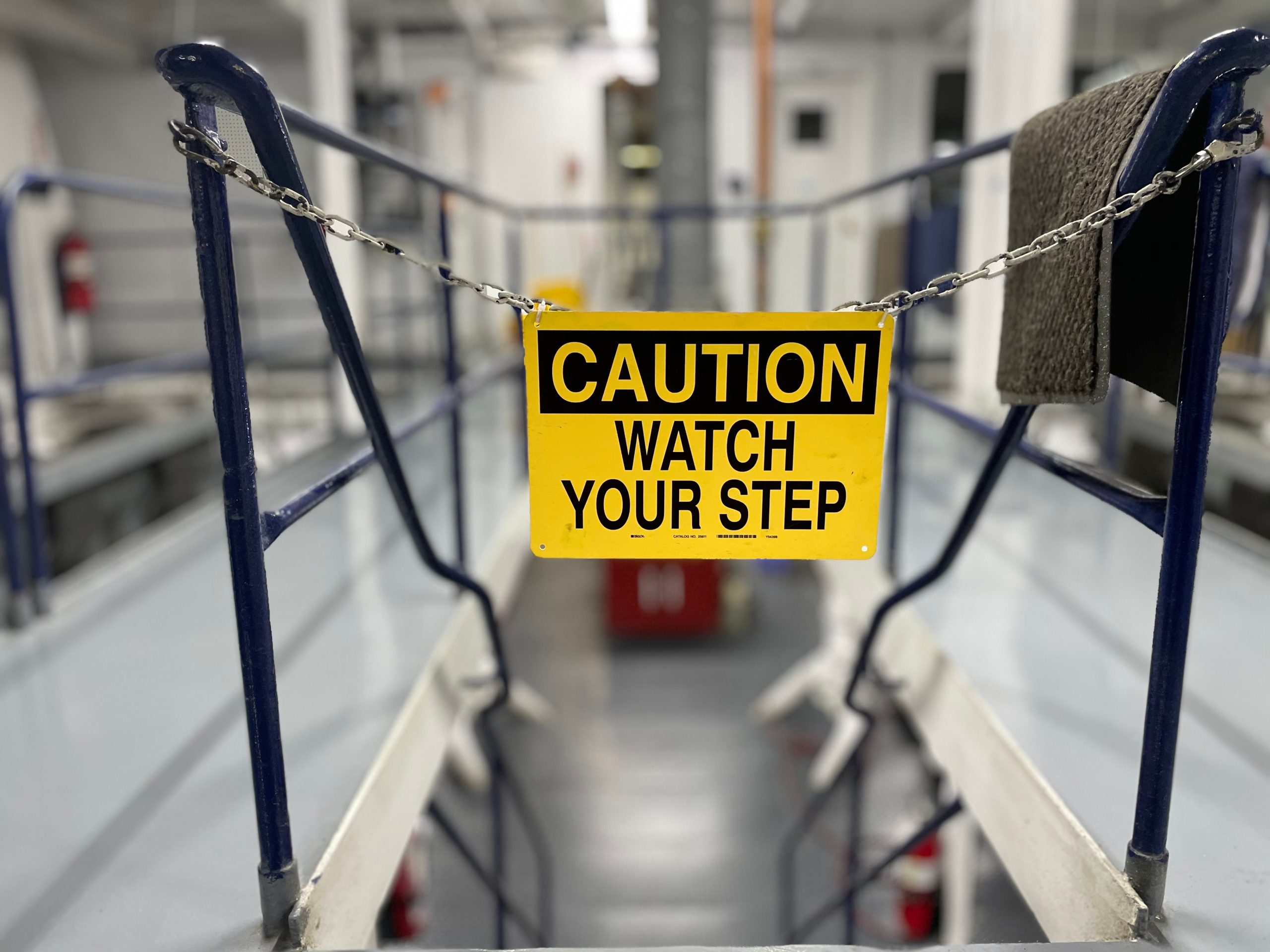
Safety
SLIPS, TRIPS, AND FALLS
In 2020, fatalities caused by falls, slips, and trips accounted for 35.3 percent, (345 of 976) of the fatalities within construction and related jobs. Workers experienced 21,400 nonfatal workplace injuries and illnesses due to falls, slips, and trips. (Bureau of Labor Statistics).
Nearly all slips or falls typically have one of the following causes:
- Poor walking surfaces
- Surface contaminants
- Footwear
- Walking style of the person
Incidents that can occur on walking and working surfaces:
- Slips occur when an individual slides causing a loss of balance. Slipping hazards include wet, icy, greasy, or soiled ground or floors. People need to wear the proper foot apparel appropriate for the job, such as safety shoes with a slip resistant sole. Slippery surfaces should be treated quickly before another worker gets hurt.
- Trips occur when an obstruction catches the worker’s foot and causes him or her to stumble forward. Tripping hazards include cords, equipment, uneven floor mats, and unseen or unexpected objects. These tripping hazards should be picked up and put away after every use, and when they are in use be aware of the danger they could pose in a walkway, such as an electrical cord strung across a sidewalk or a conference room floor.
- Falls can happen from any surface higher than four inches such as ladders, hydraulic lifts, large equipment, elevated walkways, ramps, or platforms. Falls also include falling into or through a hole. The majority of falls occur from heights less than 10 feet, so safety precautions anytime an employee works from an elevated surface.
Simple prevention methods you can take to remain safe:
- Utilize handrails or grab bars in areas where there are stairs or changes in elevation.
- Use 3 points of contact when climbing ladders or mounting/dismounting equipment (1 hand/2 feet) or (2 hands/1 foot).
- In wet or icy conditions, take smaller steps and try to ensure your torso stays balanced over your feet.
- Use slip-resistant matting or provide textured surfaces in potentially wet areas such as the floor inside a lobby entrance or inside the pedestrian door that leads into a shipping area from the outside.
- Minimize distractions to remain alert to hazards and avoid carrying bulky items that block your view.
- Remove obstructions from travel areas, such as extension cords, power cords, hoses, boxes, or tools.
- Stay alert to parts projecting from machines or equipment.
- Keep a clean and orderly workplace that prevents you and others from slipping or tripping on equipment or construction debris.